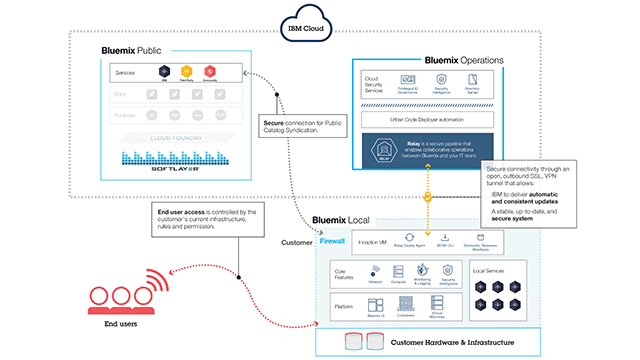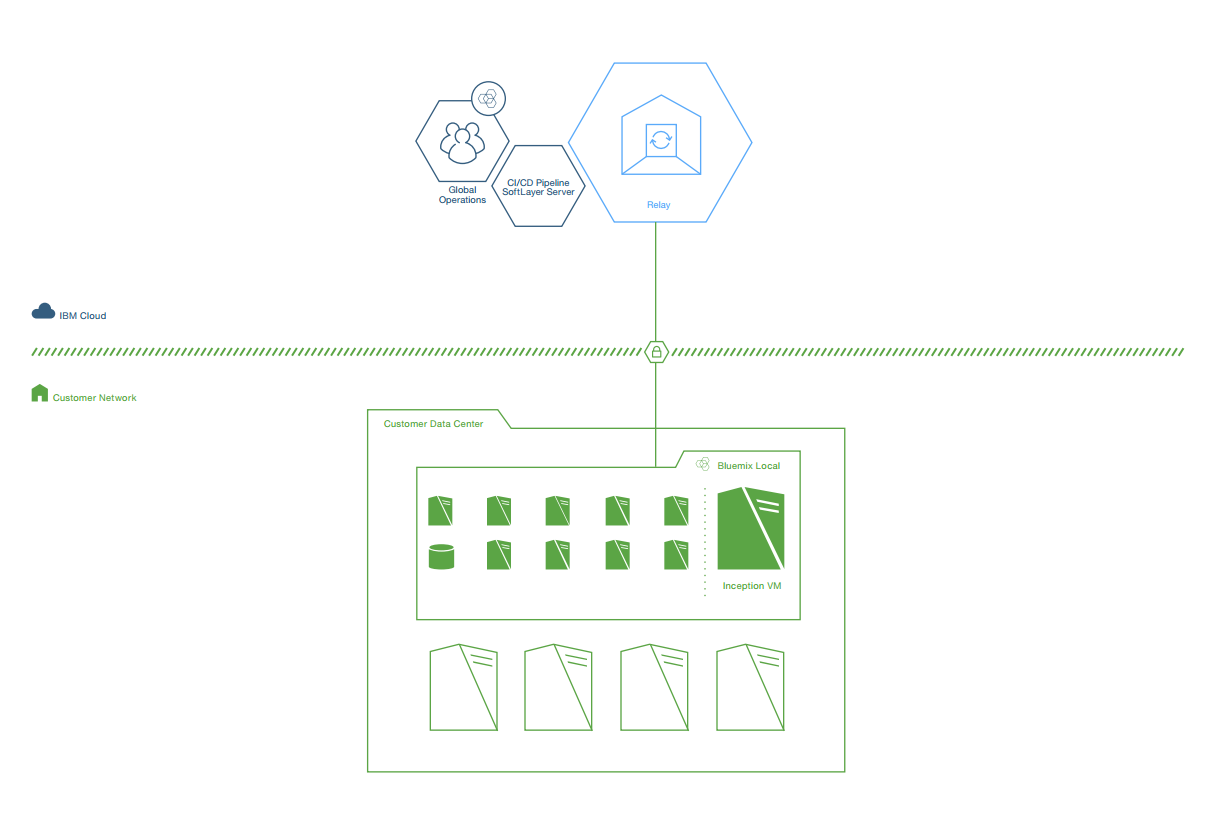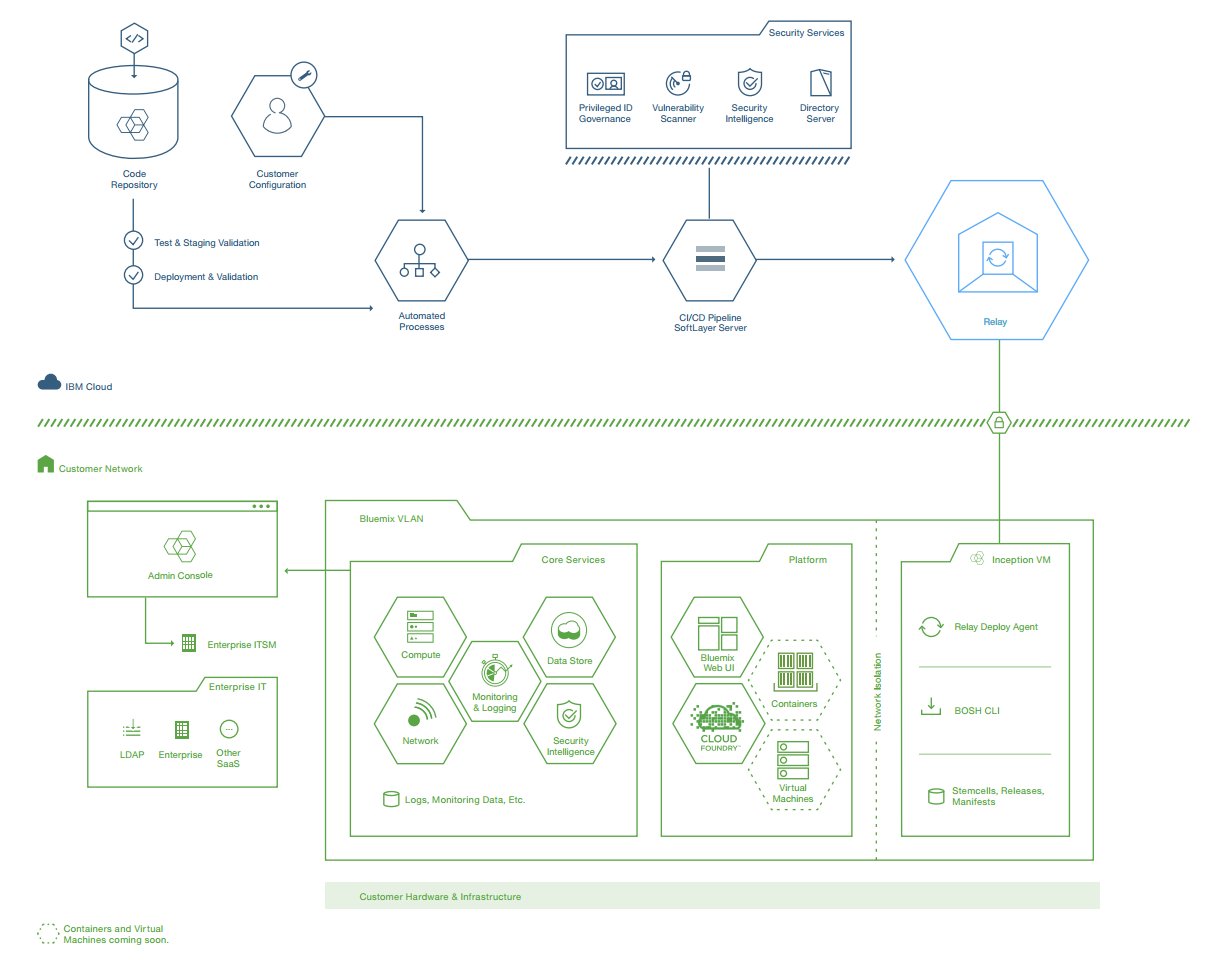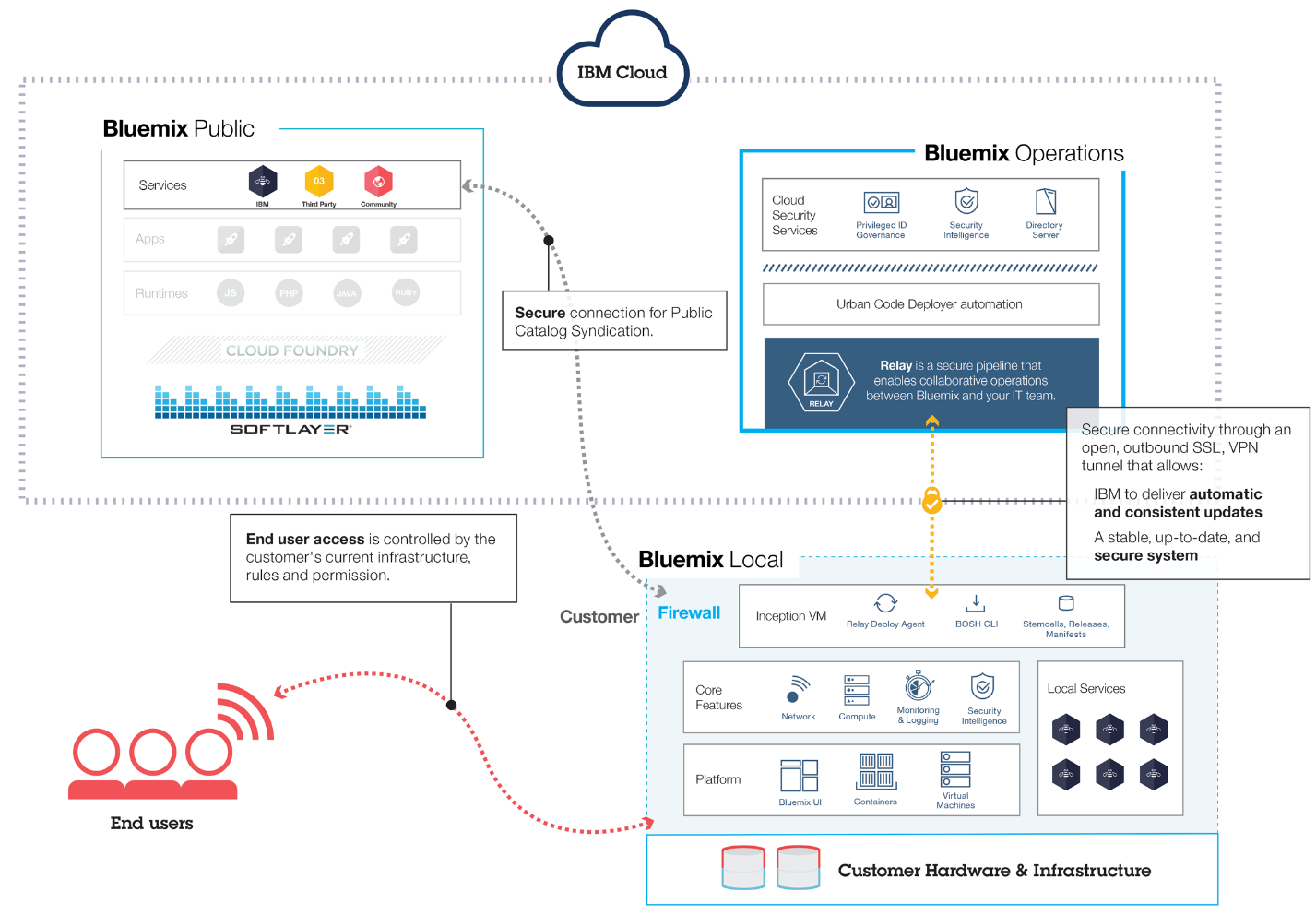IBM Bluemix Local: 5 Most Common Use Cases

Public, Dedicated, and Local
“A successful deployment of Bluemix starts with you,” said Jeff Brent of IBM as he started the presentation on Bluemix Local use cases. With another IBMer, Andre Tost, he came up with an analogy comparing the three methods of Bluemix delivery to progressive stages of a relationship.
- Public (multi-tenant, off-premises)
“In a normal relationship, you date people and you go have dinner. That’s public. If you don’t like that person, you can cut your ties.” —Jeff Brent, Senior Product Manager, IBM
- Dedicated (single-tenant, off-premises)
“A dedicated environment from a relationship perspective is like moving in together. You got to get your lease. You get to understand whether or not you leave dishes in the sink or whatever.”
—Jeff Brent, Senior Product Manager, IBM
- Local (single-tenant, on-premises)
“Local is the ultimate commitment. It takes a lot of effort, time and resources on both parties. This is a collaborative relationship.” —Jeff Brent, Senior Product Manager, IBM
How does Bluemix Local work?
Unlike Bluemix’s public and dedicated deployments, local is an on-premises cloud platform delivered as a service. IBM uses a technology they call “Relay” which creates an outbound SSL, VPN tunnel from an inception virtual machine on your IaaS to Bluemix Operations.
The inception virtual machine includes the initial releases of Bluemix and it also acts as an automation agent machine for deployment and updates when the Relay is active.
 Image credit: IBM
Image credit: IBMThe update process starts with IBM’s testing and staging environments, followed by internal Bluemix deployments, then to public and dedicated environments, and finally to Bluemix Local environments through Relay.
 Image credit: IBM
Image credit: IBMThis diagram illustrates how Bluemix Local operates.
 Image credit: IBM
Image credit: IBMBluemix Public, Dedicated, and Local are all tied together by a single update and release process. This allows the flexibility to freely move apps and services throughout different deployments with just the Bluemix admin console and syndicated catalog.
For more on Bluemix Local’s inner workings, read Jeff Brent’s post or refer to the official documentation.
Common use cases for Bluemix Local
Based on their experiences working with multiple companies, Jeff and Andre came up with five scenarios when companies commonly opt for Bluemix Local.
“There are different avenues towards Bluemix Local—one is more operational, the other is legal, and then functional.” —Andre Tost, Senior Technical Staff Member, IBM
- Legal compliance mandates local deployment. The enterprise is required by law or other form of compliance to have all of its data—critical and non-critical, and temporary and permanent—on-premises or within the country. This usually affects businesses in the financial services and risk-management industries.
“We’ve talked to customers and they love Bluemix but for legal and compliance reasons, they have to have it in country.” —Jeff Brent, Senior Product Manager, IBM
- Focus on open-source technologies and cloud platforms. The enterprise has begun or wants to begin developing cloud apps using Cloud Foundry and to focus on DevOps but is having trouble with regards to maintaining the environment and keeping up with open source strategy.
- Issues with cloud and legacy apps integration. The enterprise wants to integrate existing legacy apps and data. This is made simpler using API management which is locally deployed as a Bluemix service.
- Interest in particular Bluemix services. The enterprise is interested in a specific service that is readily available in the syndicated Bluemix catalog. Services that are sought after here will fall under IBM services (IBM Watson/IoT, mobile, data services), and open source and third-party services (Twilio, MongoDB, Redis, etc.).
“We have several customers that are interested in one of our services and Watson has come up a number of times.” —Jeff Brent, Senior Product Manager, IBM
- The lack of Ops engineers. The enterprise does not want to or cannot staff operations for Bluemix on cloud. This is usually a consequence of not having enough personnel or having too many missing key skills in several new technologies.
Local but still Bluemix
Even after listing these use cases, the most prominent reason for businesses to pick Bluemix Local over Public and Dedicated will either be due to a legal or business requirement to keep data and infrastructure on-premises. Despite this, the user experience on Bluemix Local should still be very similar to its cloud-based version and because of this, it’s easy for users to switch and adjust between Bluemix deployments.
“For the most part, we see people say ‘I can’t go into Bluemix cloud for legal and other reasons, so I need to have this running in my shop.'” —Andre Tost, Senior Technical Staff Member, IBM
There are several ways to get started with Bluemix Local. For instance, Blue Box—now acquired by IBM—delivers Bluemix Local through Blue Box Local, a “private-cloud-as-a-service” solution. Read more about Bluemix Local on Blue Box in this post by Animesh Singh of IBM.
CloudOne has it’s own way of deploying Bluemix—on a virtual private cloud.
IBM and 21Vianet, Inc., a carrier-neutral Internet and data center service provider, are working in collaboration to make Bluemic Local available throughout China.
For more details on Bluemix Local, read this architect’s guide and this overview from Animesh Singh.
Related videos
Watch this video for a short overview of Bluemix Local.
About the speakers
and edited by Alex Khizhnyak, Director of Technical Evangelism.)












